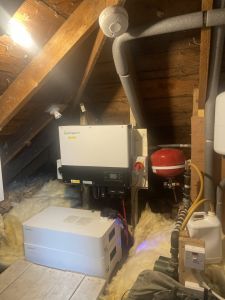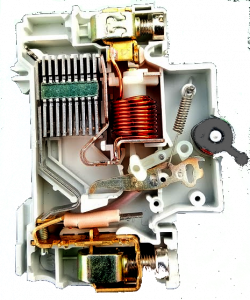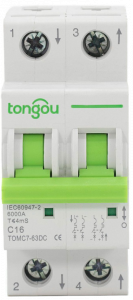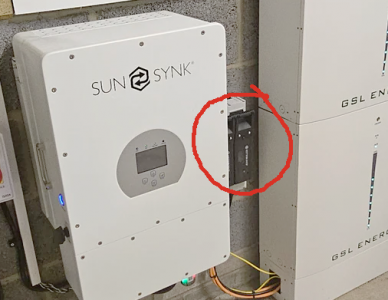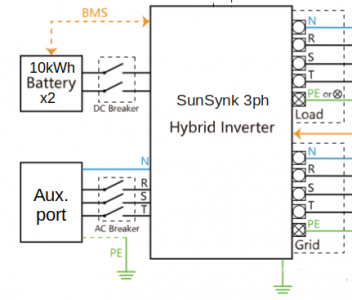@bretix might be best getting one of those heat geek certified engineers. What are the flow rates and temperatures just for curiosity. You would probably need to check that when cold and heating running at pace, but your service engineer should check that.
@david999 just checked the house for cameras! Lol as I have just done that very thing! Elite are heat geek verified and they do diagnostics as well as servicing so well may change servicing plan to them.
Hopefully going to get them out to do diagnostics and if impressed enough will change to them. Retrospect is great and I wish I'd gone with these guys when I'd got their quotes initially for the ASHP. Live and learn!
2 10kw Grant Aerona3
Heat loss calc 16.5 kw @ -2.8 degrees
4.32 PV
A post came up on utube last night regarding DC isolators and fire. Saying not to fit them and some reference to insurance involved . If the inverter has its own dc isolation then no need, but I think I will stick with mine. I can’t see how an isolation on the dc side will cause a fire anymore so than any other switch. Are they talking about systems in parallel perhaps where the amperage can exceed the individual panel amps, but no great details on the fires and I feel scaremongering. On that subject though my inverter sits below the roof trusses and have touched on this previously and thinking there should be a fire blanket pinned above it just in case. It would be so easy to transfer fire to those dry roof trusses.
@bretix a few folk wish that, being accredited to this and that means nothing, I fought a battle from Dec last year until recently and there is a massive thread on here about the journey. I wouldn’t be where I am either but for help on here because I was also told my heating was fine.
Posted by: @david999A post came up on utube last night regarding DC isolators and fire.
[fx: sigh]
It's likely that the YouTube poster has come across the publicly accessible standard PAS-63100 which we discussed here
and I referred to in your earlier novel published here.
Your particular installation, in an attic with a plentiful supply of dry tinder, isn't ideal.
But it doesn't necessarily mean it's unsafe.
Personally, I'd be more concerned about an inverter and storage battery in an alcove between the occupants and the main exit from a house!
Switching DC is more problematic than AC because the waveform doesn't pass through 'zero volts' to break the arc between the contacts when they open.
If you use an ordinary MCB designed for mains operation, the arc acts as welding torch and effectively melts the contacts together 😲
For that reason you need DC-rated trips.
They have an arc-suppression ladder, and a pair of small magnets either side of the contacts.
When the arc forms, the magnets pull it into the plates in the ladder, which quench it.
For that reason, any DC-rated trip must be installed the right way around.
There will be printed symbols on the casing which tell you the polarity.
There's a lot more information I can provide on this issue.
But that's a brief overview to allow you to appreciate the sort of detail which should have been covered in PAS 63100.
A 'Standard' needs to tell people what to do right, and explain why.
Simply publishing a regulatory list of DO NOTs isn't going to encourage safe practice.
Save energy... recycle electrons!
@transparent I thought I had touched on that way back.
any idea what the insurance stance on these type of fires, I told my insurance I had what I had and they simply told me fine but they didn’t cover the panels if they got damaged but would the roof. No mention of fire precautions or exclusions. We have smoke alarms linked and a clear escape route. I will purchase a co2 extinguisher shortly and likely a blanket. Only issue is the main consumer units at the base of the stairs but seemingly it complies with regs. You can’t cover all scenarios and I suspect in the future heat pumps and solar will be excluded from loft installations. I just went through a home rebuild when the roof came off in a storm and a fire isn’t an option for me. The roofer who installed my roof had a fire during a felting job and he said what wasn’t destroyed in the fire the fire brigade finished with the water. He had just started and a flame caught something inside the roof and no stopping it. I know how the folk feel, we lost everything and had to start all over again.
I don't think the insurance underwriters understand enough of the technology arriving in our homes to be able to assess the levels of risk.
At some point there will be an installation which goes wrong and causes deaths.
The tabloid press will then 'go ape' and demand that "something be done".
It's not the sort of installations being done by members of this forum which should give rise to concern.
Here we discuss the technology and share good-practice with others.
The problem lies with the poor installations being done by professional MCS-accredited companies who have little understanding of the underlying science.
As an example, let's consider the two fuses (?) which are prominently visible between @bretix 's GSL batteries and his 3-phase SunSynk inverter.
Why are they there, how have they been specified and what functional purpose do they perform?
a: Does the installer think they protect the batteries or the inverter?
b: What do they do which isn't already covered by the BMS in each battery enclosure?
c: The SunSynk manual has a diagram which shows a double-pole DC-breaker,
and states it should be rated 300A for the 10.24kW inverter.
d: How is that different to the knob on the left of the inverter which is described as a DC switch?
e: If the electronics in the inverter were to go faulty and present a 'near short circuit' to the batteries, what is it that stops that current flow,
and how fast does it act?
f: How many minutes will pass before @bretix responds here with a note of alarm in his message? 😉
Save energy... recycle electrons!
@transparent you know you are getting old when you purchase a PC then try to purchase a mouse mat, only to be told by your son he hasn’t used one for 15 years since they are optical now. I guess that explains it, geez, you think someone would have said. I think it was the entertainment factor.
@transparent how many people are in this situation with installations not carried out to the book. I wonder as surely only a smaller percentage of the population come into this forum and are living in ignorant bliss.
Should there be a regional/national inspectorate or peer reviews to ensure the job is done properly?
So I've just purchased the 95mm² cables do I need larger fuses?
Actually @transparent you should charge for a video inspection for my future installations😄 so I know the job is getting done properly
2 10kw Grant Aerona3
Heat loss calc 16.5 kw @ -2.8 degrees
4.32 PV
@transparent another question that has come of this is that when I bought the batteries I was wanted to ensure they had back up (internet, electric gates etc). Reliably informed they do but the installer would have to add wiring to the consumer unit . The installers weren't sure about this and said that would be another 'big' job in itself.
Is back up viable (safely) in the way that was described?
2 10kw Grant Aerona3
Heat loss calc 16.5 kw @ -2.8 degrees
4.32 PV
@bretix needs to be a regulator who regulates. At this moment it’s a time bomb, they hope no issues until the 12 month installation has expired, that the owner knows little because most are heating engineers applying basic heating principles, too interested in the next job, fast buck then go bust, start up in different name and do it again. The guys who did mine had accreditation from samsung which was a couple of hours on a pc. It covered them to provide an extended samsung warranty. I was in direct contact with samsung and they were very helpful and they knew that their installers were twats. Now will they demand appropriate training be undertaken, remove them from their list of approved installers or sally along since they are selling loads of heat pumps to them. All the awards my company had were worthless because the guys were useless. Now I have to say that a huge degree of this was a scam/ cost saving because things like wrong type/ grade of insulation or only 3% antifreeze can only be described as fraudulent behaviour. There is nobody out there checking. MCS registered is a paper exercise.
- 26 Forums
- 2,342 Topics
- 53 K Posts
- 234 Online
- 6,000 Members
Join Us!
Worth Watching
Latest Posts
-
RE: Help me keep the faith with my air source heat pump installation
@simonf thats interesting as I’ve noticed my flow and r...
By AdamK , 1 hour ago
-
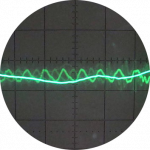
RE: LiFePO4 lithium battery fires and explosions
@batpred — your latest post here has more than a bit of...
By cathodeRay , 1 hour ago
-

RE: MELcloud scheduling misbehaviour
No, it gets to set temperature easily even during perio...
By Abernyte , 2 hours ago
-

RE: Setback savings - fact or fiction?
@robs — is there anything weird in your post or footer/...
By cathodeRay , 2 hours ago
-
RE: Free Ecoheat Heat Pump Install
Sorry hit 'add reply' too early, this forum layout will...
By Deltona , 3 hours ago
-
RE: Poll for Time of Use, tariffs, technology
@batpred Fair enough, if the usage of these materials i...
By Papahuhu , 3 hours ago
-
And arguably even more important, sodium will be hopefu...
By Batpred , 6 hours ago
-
RE: A Smarter Smart Controller from Homely?
I've been thinking of emailing Homely to ask for a few ...
By JohnnyB , 18 hours ago
-
Max output of Heat pump (Daikin 4Kw EDLA04)
Hello, I am a bit puzzled that according to pcdb tes...
By GeorgeA , 18 hours ago
-

In that case, @technogeek, I’d sign up for the free sol...
By Majordennisbloodnok , 19 hours ago
-

RE: Has Anyone Else Noticed a Decline in Tradesmanship?
@cathoderay Hence my rider about ‘all else being equal’...
By Toodles , 20 hours ago
-

RE: Heat Pump Performance Analysis Web App using Modbus Data
@redzer_irl — all my heat pump data is in csv files, me...
By cathodeRay , 20 hours ago
-

That’s not a problem. If you can hit the main landing p...
By Majordennisbloodnok , 21 hours ago
-

RE: Configuration issues with 10kW Midea R32 heat pump
@benson I believe there are quite a few of these instal...
By Toodles , 21 hours ago
-
RE: 10kw heat pump run in 24*7 data?
I would say you most likely do need 10kW. My gas consu...
By JamesPa , 21 hours ago
-
RE: Mitsubishi Ecodan 11kw Defrosting Issue.
@thundermink I managed to find the fault. I did it a lo...
By meehow , 22 hours ago
-
RE: Here is my heat pump installation with questionable COP in Italy
Well in Italy there is nothing controlling the quality ...
By materox345 , 23 hours ago
-

RE: What a Bad Heat Pump Installation Looks Like
@editor The trick to an inside unit installation is to ...
By MikeFl , 2 days ago


